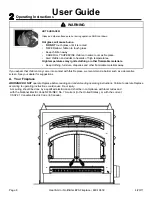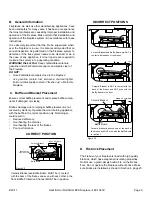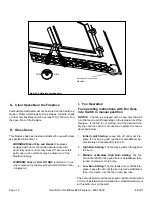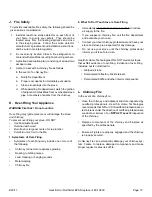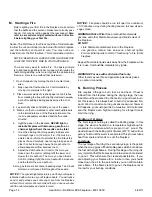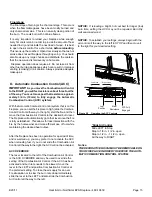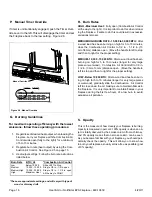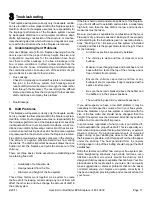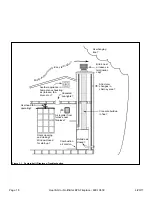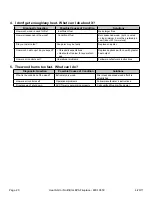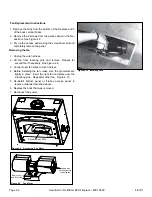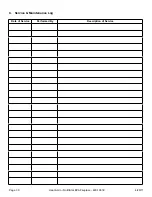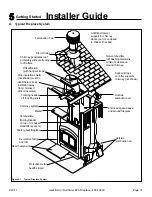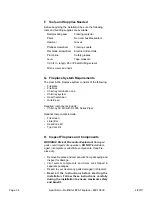
Page 22
4/20/11
Heat & Glo • NorthStar EPA Fireplace • 480-1081E
Clean-plated surfaces with vinegar or a glass cleaner
before lighting your first fire to prevent permanent staining.
CAUTION
• Do not use polishes with abrasives.
It will scratch plated surfaces.
CAUTION
Clean all the fingerprints and oils from the surface before
firing the appliance for the first time.
• Use a glass cleaner or vinegar and towel to remove the
oils.
• Oils can cause permanent markings on plating, if not
removed.
• After plating is cured, oils will not affect the finish.
4. Care and Cleaning of Plated Surfaces
5. Door and Door Gasket
Periodically check the door gasket for proper seal. As the gasket
compresses or “seats” during use, it may become necessary to
adjust or tighten the door latch.
To Adjust or Tighten Door Latch
Remove spacing washers shown in Figure 4.2 At least one
spacing washer and the black washer must be left in place.
OR
Replace the gasket material. Wear or damage to the gasket
material can cause air leakage into the firebox resulting in
overfiring and loss of efficiency.
A replacement gasket is available from your dealer.
Locknut
Door Cross Section
(example)
Latch Cam
Spacing Washers
Square Key
Handle
Teflon Washer
DO NOT REMOVE
Figure 4.2 Door Handle Assembly
2. Disposal of Ashes
WARNING! Fire Risk!
Disposal of Ashes
• Ashes should be placed in metal container with tight
fitting lid.
• Do not place metal container on combustible surface.
• Ashes should be retained in closed container until all
cinders have thoroughly cooled.
Frequency:
As necessary
By:
Homeowner
Task:
See the following instructions.
• Ashes should be placed in a metal container with a
tight fitting lid. The closed container of ashes should
be placed on a non-combustible floor or on the ground,
well away from all combustible materials, pending final
disposal.
• If the ashes are disposed of by burial in soil or
otherwise locally dispersed, they should be retained in
the closed container until all cinders have thoroughly
cooled.
WARNING! Fire Risk! Do not use chimney cleaners or flame
colorants in your appliance. Will corrode pipe.
WARNING! Risk of Fire! Ashes could contain hot embers.
3. Glass Cleaning
Frequency:
As necessary
By:
Homeowner
Task:
See the following instructions.
Clean glass with a non-abrasive glass cleaner. Abrasive
cleaners may scratch and cause glass to crack. If the
deposits on the glass are not very heavy, normal glass
cleaners work well. Heavier deposits may be removed
by using a damp cloth dipped in wood ashes or by using
a commercially available oven cleaner. After using an
oven cleaner, it is advisable to remove any residue with
a glass cleaner or soap and water. Oven cleaner left on
during the next firing can permanently stain the glass and
damage the finish on plated metal surfaces.
A portion of the combustion air entering the firebox is
deflected down over the inside of the door glass. This air
flow “washes” the glass, helping to keep smoke from adher-
ing to its surface. When operated at a low burn rate, less
air will be flowing over the glass and the smoky, relatively
cool condition of a low fire will cause the glass to become
coated. Operating the appliance with the Burn Rate Air
Control and Start-Up Air Control all the way open for 15-20
minutes should remove the built up coating.

